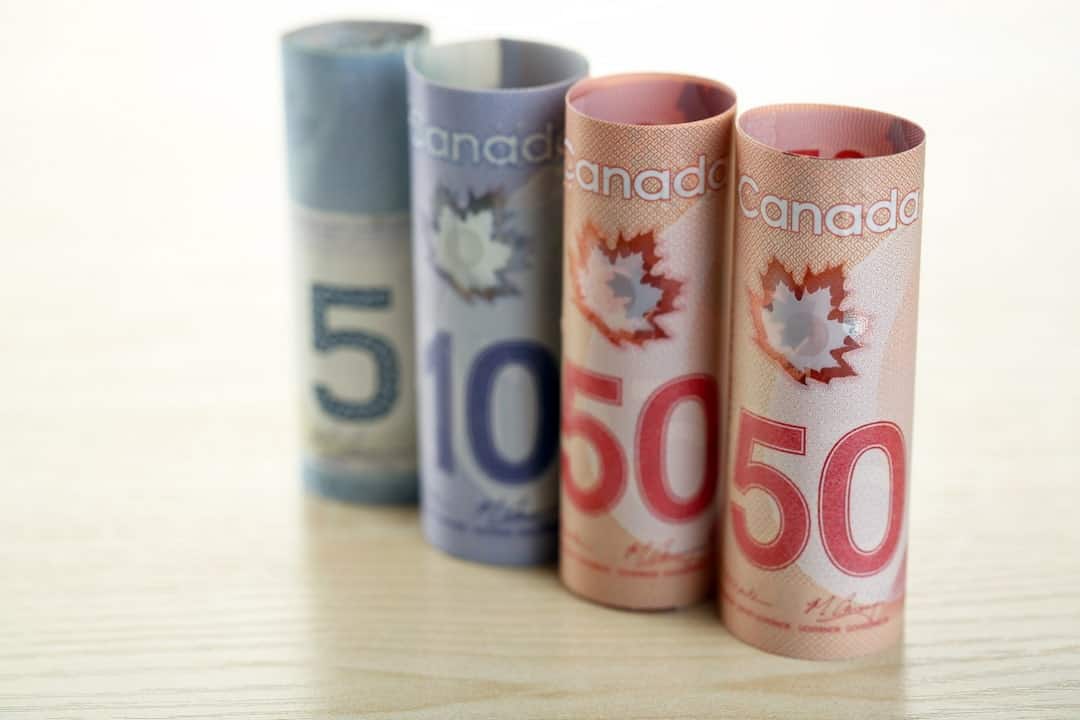The cost of living in Canada is constantly rising. Many Canadians are surprised to hear that the cost of living in Canada is even higher than in the United States. This can make saving money for the future difficult for the average Canadian. Luckily, with tax-free saving accounts (TFSAs), saving couldn’t be more achievable and financially rewarding.
A TFSA allows you to contribute as much, or as little, as you want every year, as long as you are within the TFSA contribution limit. Furthermore, you can withdraw from your TFSA as frequently as you choose. There are limitations for day trading, though.
Today, we are going to look at withdrawing money from your TFSA and the withdrawal rules you need to be aware of. Let’s take a look.

What is a TFSA?
Tax-free savings accounts (TFSAs) are a type of savings account that is tax-sheltered. This means any contributions you make, interest you earn, dividend payments and capital gains are not taxed. Your savings can grow tax-free and be withdrawn with no tax penalties. A TFSA is a flexible savings vehicle because it can be used for any purpose.
One of the things that distinguish a TFSA from non-registered accounts or other savings accounts is the wide range of investments and securities that can be held in your account. Qualified Investments can include:
- Cash
- Stocks
- Mutual Funds
- Exchange-Traded Funds
- Bonds
- Securities
- Guaranteed Investment Certificates (GICs)
TFSAs allow your investments to grow at a faster rate (see ‘Best TFSA Investments‘). Usually, 50% of any capital gains you make on your investments are subject to income tax. Keeping these additional savings in your account allows the value of your account to increase. There is no limit on how many TFSAs one person can have, as long as, collectively, they do not exceed the annual contribution limit.

Tax-Free Savings Account (TFSA) – Guide for Individuals
Tax-free savings accounts were introduced in Canada in 2009. They became instantly popular because of their tax-free nature. However, another huge advantage to a TFSA is its time and usage flexibility. A TFSA can be used for any purpose and savings can be withdrawn at any time.
Qualified Canadians can contribute any amount, up to a specified limit, every year. Unlike other investment accounts, a TFSA does not require the account holder to have an income in order to open an account or make contributions.
The type of investments you choose to hold in your TFSA will depend on your investment goals and when you plan to withdraw your savings. If your savings time frame is short-term, you may be better advised to contribute cash. Cash savings allow you to make gains through any interest earned and the savings you make on your income tax. You also do not need to worry about fluctuations in the market or high-risk investments reducing the value of your savings.

If your savings goal is more long-term, for example, 10 years or longer, it may be advisable to consider other investment types. By building a diversified portfolio with some high-risk investments, you are likely to receive more capital gains. You should also see higher growth in your savings pot. You can choose to create a self-directed investment portfolio with an online broker. Alternatively, a Robo advisor will create a portfolio based on a number of factors. This includes your risk comfort level, your investment goals and your planned timeframe.
TFSA Contribution Limits
There are two contribution limits you need to be aware of.
- The annual contribution limit – Known as the TFSA dollar limit.
- The lifetime contribution limit – Known as the annual TFSA dollar limit.
The Government of Canada reviews changes in the consumer price index periodically. This helps to determine the annual TFSA dollar limit. The annual contribution limit is currently set at $6,000. The annual limit has varied from $5,000-$10,000 since TFSAs were introduced in 2009. It is important to know the past contribution limits since the year you turned 18 years old, as this helps to calculate your lifetime limit.

If you contribute more than your limit for the year, the Canadian Revenue Agency (CRA) will charge you an additional fee per month. The CRA rules currently state that you will be charged 1% of the excess money in your TFSA every month. You should therefore ensure you are aware of the TFSA contribution room left each year.
The table below helps to explain the contribution limits in more detail.
| YEAR | Annual TFSA Contribution Limit | Cumulative Contribution Limit |
| 2009 | $5,000 | $5,000 |
| 2010 | $5,000 | $10,000 |
| 2011 | $5,000 | $15,000 |
| 2012 | $5,000 | $20,000 |
| 2013 | $5,500 | $25,500 |
| 2014 | $5,500 | $31,000 |
| 2015 | $10,000 | $41,000 |
| 2016 | $5,500 | $46,500 |
| 2017 | $5,500 | $52,000 |
| 2018 | $5,500 | $57,500 |
| 2019 | $6,000 | $63,500 |
| 2020 | $6,000 | $69,500 |
| 2021 | $6,000 | $75,500 |
Your annual TFSA contribution room can change depending on the following factors:
- Your annual TFSA dollar limit.
- Your unused contribution room from your TFSA in the previous year.
- Any withdrawals made the previous year.
The lifetime contribution limit is the cumulative contribution limit since the year your turned 18 years of age. You are entitled to all the contribution room from previous years, even if you did not have a TFSA account at the time. This means you can contribute more than your limit for the year to catch up on your unused TFSA contribution room.
For example, if you open a TFSA in the year 2021, and you are 25 years old, you are entitled to the unused contribution room up until this point. Presuming you turned 18 in 2014, your unused TFSA contribution room would be the accumulation of these seven years. The combined TFSA contribution room for these years would be $50,000. As this is your unused contribution room, you can contribute the full amount to your TFSA without incurring a penalty.
The lifetime TFSA contribution room for anyone who was 18 years or older in 2009 is $75,500. Anyone who opens a TFSA now will have this unused contribution room at the beginning of the year. However, those who contributed the maximum amount every calendar year since 2009 are likely to have much higher savings in their TFSA. This is because their balance has been accumulating interest, dividends and capital gains.

TFSA Withdrawals: Rules
Although it depends on the type of TFSA you have, you can usually withdraw money from your TFSA at any time. There is no penalty for withdrawing funds from your TFSA. Unlike other savings accounts, the amount you withdraw is not limited. Account-holders can withdraw as much money as they choose from their TFSA. You can also make a withdrawal as often as you choose.
Money you contribute to your TFSA can grow significantly over time. This means many Canadians choose not to withdraw money, unless for a specific purpose. However, if you have an unexpected financial emergency, or want to make frequent withdrawals, you will not be penalized for this.
Withdrawals from a TFSA can be done at any point in the calendar year. However, keep in mind that some TFSA accounts require you to maintain a minimum balance. Otherwise, your account may become inactive and you may not have access to TFSA services. If you are unsure, consult the financial institution or your financial advisor.
Any money that you withdraw from your TFSA will be added to your contribution room the following year. For example, if your TFSA withdrawals in 2020 totalled $5,000, this will be added to your contribution room for the following year. So in 2021, your contribution room will be $11,000.
Any withdrawals you make are not subject to income tax. As they are not classed as taxable income, they do not impact any federal income-tested benefits or tax credits you are eligible to receive, such as Old Age Security or Guaranteed Income Supplement.

Frequently Asked Questions
How Do I Open a TFSA?
To open a TFSA, you need to be a resident of Canada and have a Social Insurance Number (SIN). You also need to be at least the age of the majority in the province you are a resident of. This is 18 years old in Alberta, Manitoba, Ontario, Prince Edward Island, Quebec or Saskatchewan. In British Columbia, New Brunswick, Newfoundland, Nova Scotia, Northwest Territories, Nunavut or Yukon this minimum age is 19. A TFSA can be opened in a variety of financial institutions, including
- Banks
- Credit unions
- Trust and loan companies
- Insurance companies
- Caisses Populaires
- Robo-advisors
- Online brokers
Can I Transfer Money From My RRSP?
A Registered Retirement Savings Plan terminates in the account holder’s 71st year. At this point, you can choose to transfer the balance to a TFSA. Although you can expect to pay a financial penalty for the withdrawal from your RRSP, opening a TFSA and making a transfer of funds ensures you have access to your funds and are financially secure in your retirement.
RRSP withdrawals may be subject to tax. However, once your funds have been contributed to your TFSA, any withdrawals made in future years will not be subject to tax. It’s worth considering RRSP vs TFSA.
Can I Have a Spousal TFSA?
At the moment, a spousal TFSA is not permitted. You are also not able to make TFSA withdrawals or contributions from an account that is registered to your spouse. You also cannot transfer any excess amount of contribution room to your spouse’s TFSA. However, it is possible to make contributions to your spouse’s TFSA by physically giving them the money to contribute to their own account. Any income earned on this money, or excess interest they earn, will belong to your spouse.
The Bottom Line
Withdrawing money from your TFSA could not be easier. Being able to make a TFSA withdrawal at any time, with no limitations on the amount you are able to withdraw is a huge benefit to Canadians. Whether you are saving for retirement, to buy a house or car, for your child’s education or simply as an emergency fund, a TFSA is a fantastic option.
Another huge benefit of a TFSA is withdrawals not being subject to tax. Your savings can grow tax-free and money withdrawn with no tax implications. This helps to maximize your savings and ensure your future finances are secure.